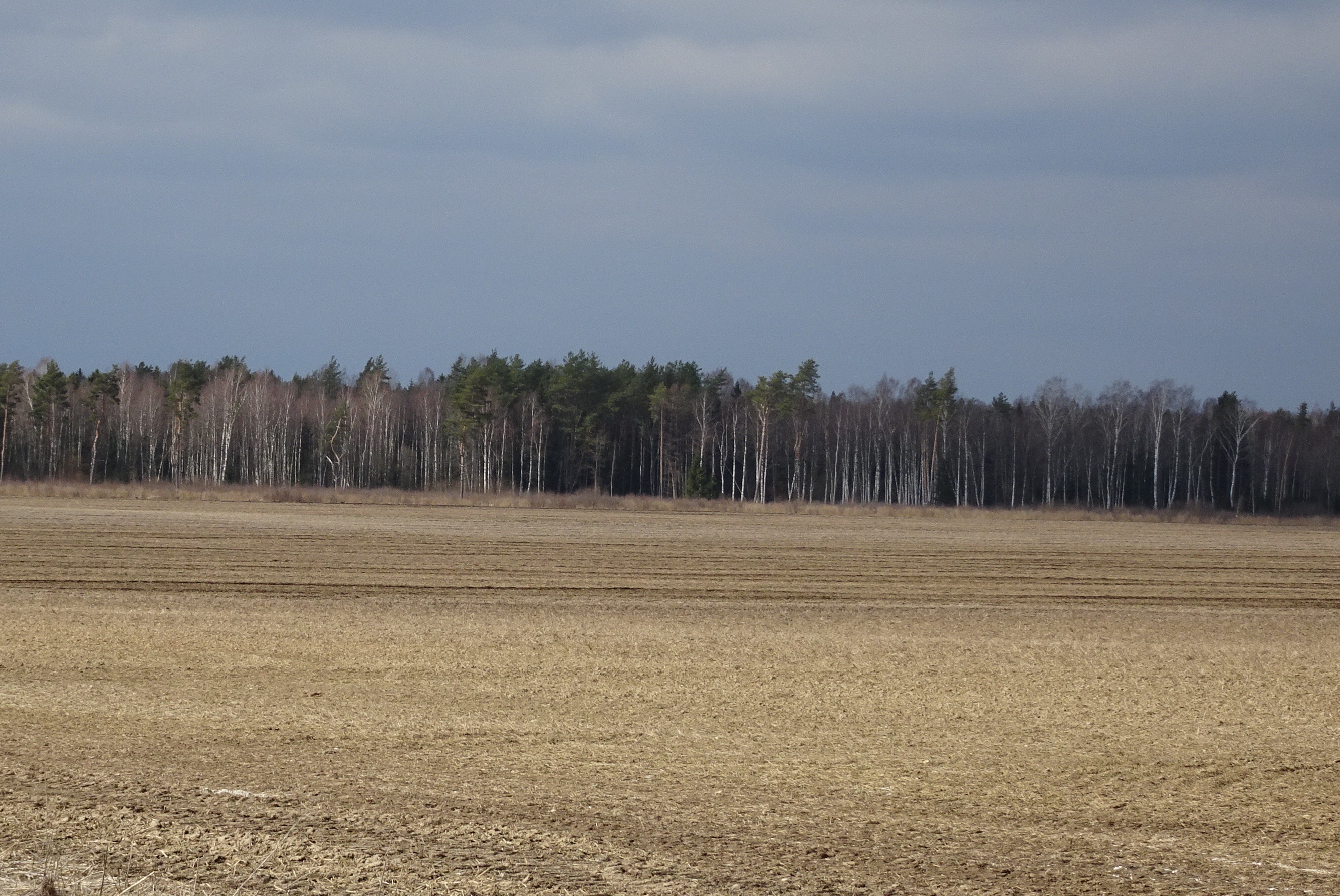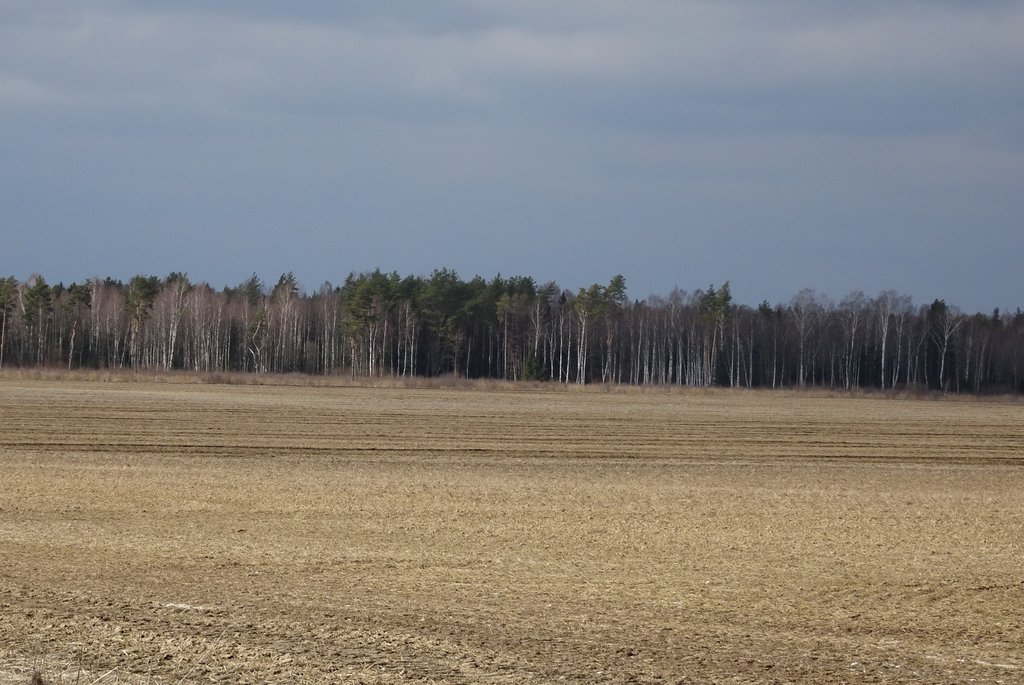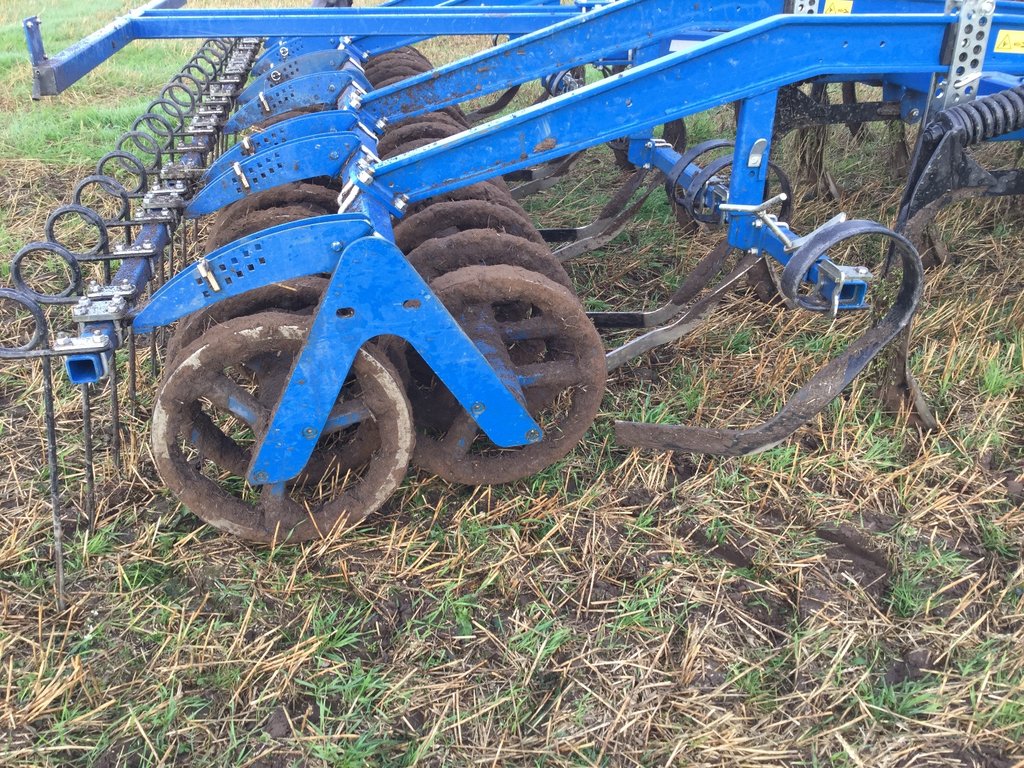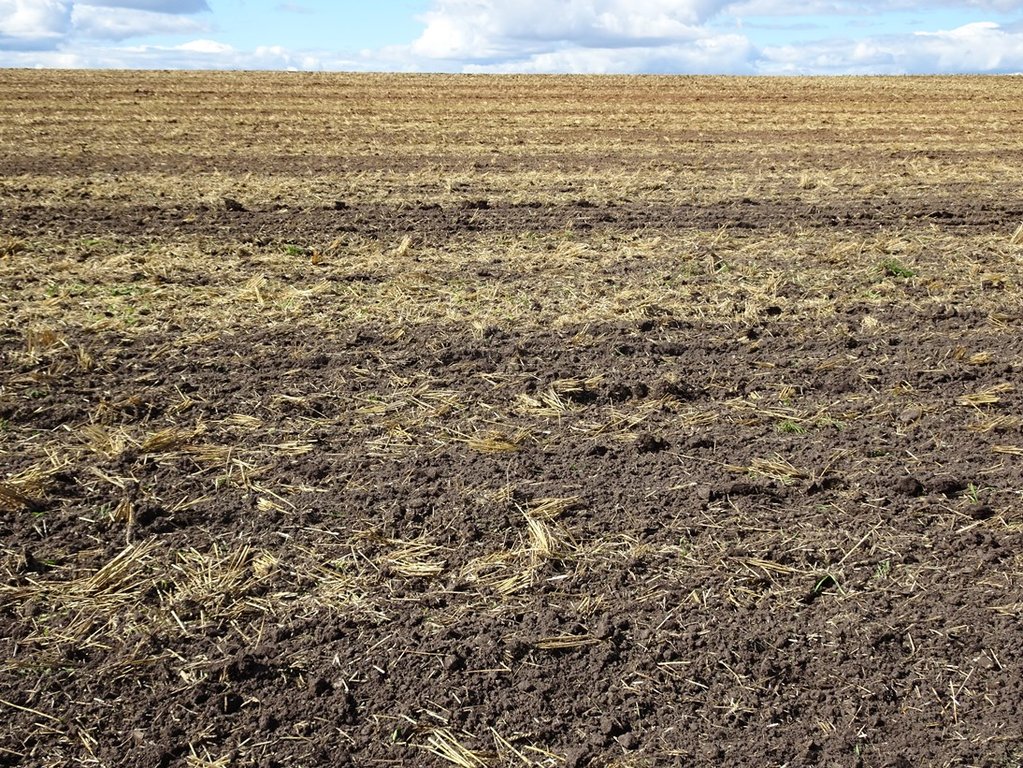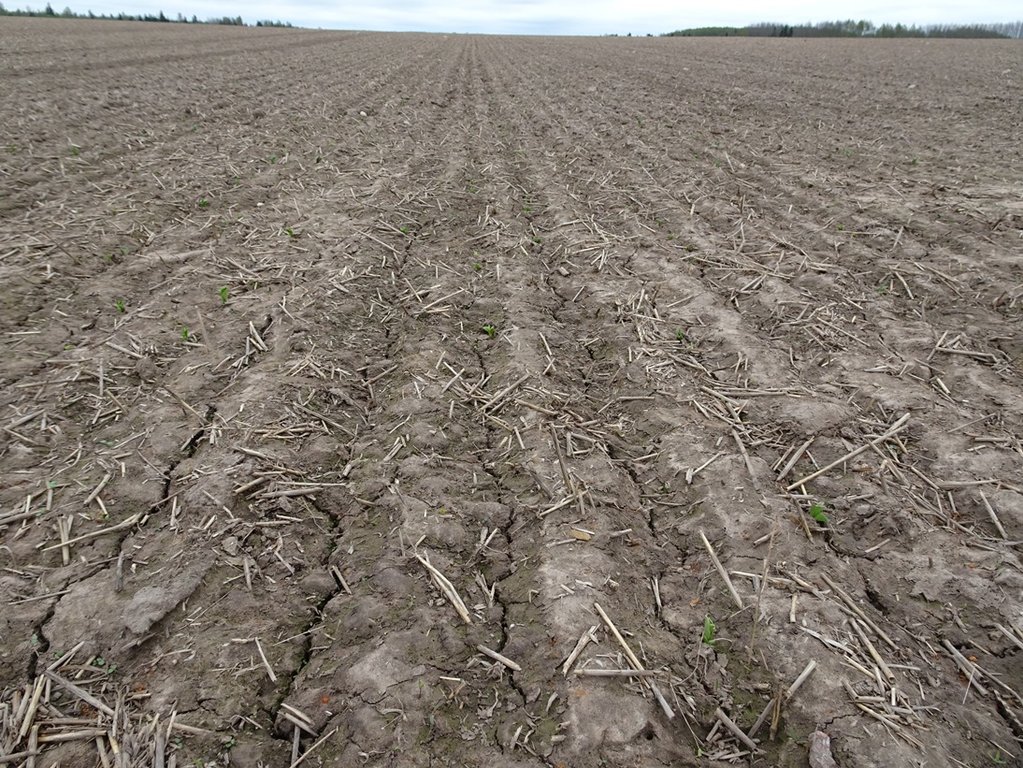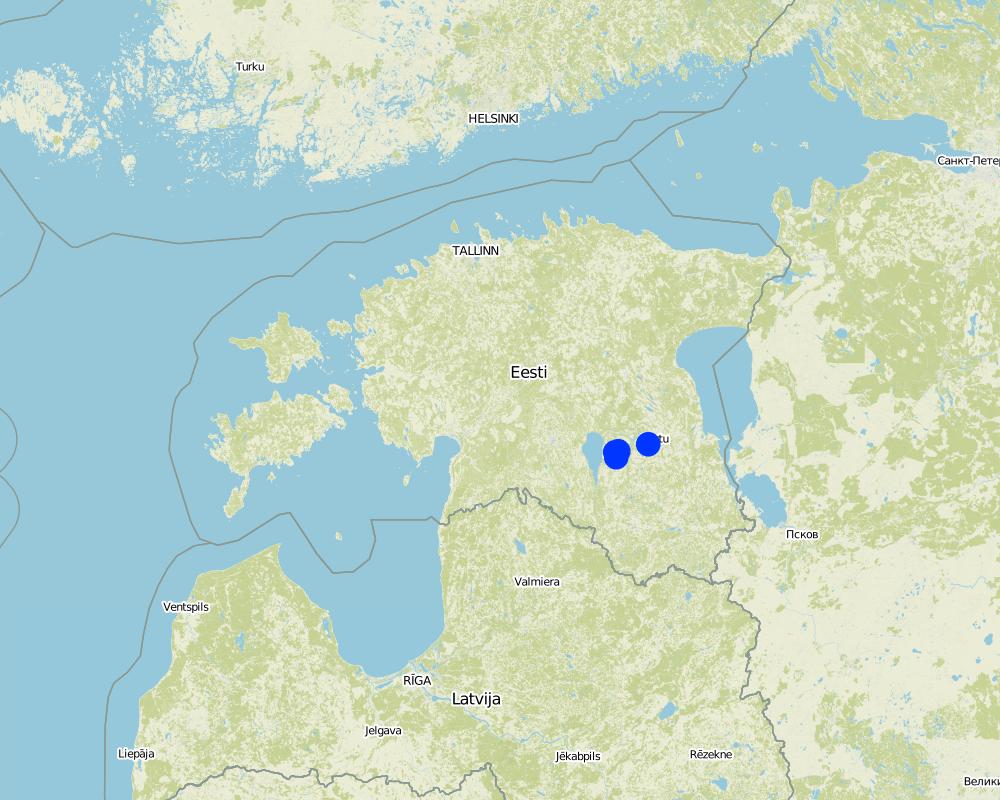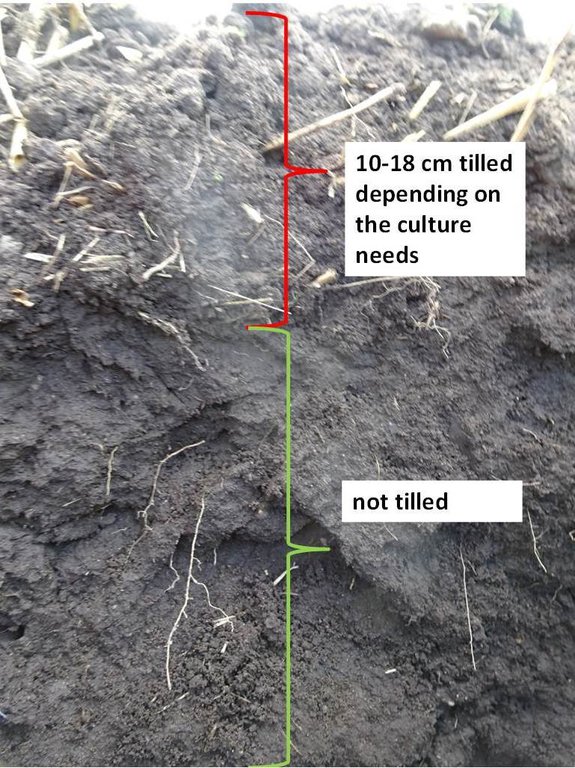Reduced tillage [ប្រទេសអេស្តូនី]
- ការបង្កើត៖
- បច្ចុប្បន្នភាព
- អ្នកចងក្រង៖ Endla Reintam
- អ្នកកែសម្រួល៖ –
- អ្នកត្រួតពិនិត្យច្រើនទៀត៖ Ursula Gaemperli, Gudrun Schwilch
minimeeritud harimine
technologies_3120 - ប្រទេសអេស្តូនី
ពិនិត្យមើលគ្រប់ផ្នែក
ពង្រីកមើលទាំងអស់ បង្រួមទាំងអស់1. ព័ត៌មានទូទៅ
1.2 ព័ត៌មានលម្អិតពីបុគ្គលសំខាន់ៗ និងស្ថាប័នដែលចូលរួមក្នុងការវាយតម្លៃ និងចងក្រងឯកសារនៃបច្ចេកទេស
បុគ្គលសំខាន់ម្នាក់ (ច្រើននាក់)
អ្នកប្រើប្រាស់ដី:
Aruksaar Ahti
+37253448354
aruksaar@hot.ee
Viljameister OÜ
Tartumaa, Konguta vald, Kobilu küla, 61201
ប្រទេសអេស្តូនី
researcher:
researcher:
Lauringson Enn
+37253402207
enn.lauringson@emu.ee
Estonian University of Life Sciences
Kreutzwaldi 1, 51014 Tartu
ប្រទេសអេស្តូនី
ឈ្មោះគម្រោងដែលបានចងក្រងឯកសារ/ វាយតម្លៃលើបច្ចេកទេស (បើទាក់ទង)
Interactive Soil Quality assessment in Europe and China for Agricultural productivity and Environmental Resilience (EU-iSQAPER)ឈ្មោះអង្គភាពមួយ (ច្រើន) ដែលបានចងក្រងឯកសារ/ វាយតម្លៃបច្ចេកទេស (បើទាក់ទង)
Institute of Agricultural and Environmental Sciences, Estonian University of Life Sciences (IAES/EMÜ) - ប្រទេសអេស្តូនី1.3 លក្ខខណ្ឌទាក់ទងទៅនឹងការប្រើប្រាស់ទិន្នន័យដែលបានចងក្រងតាមរយៈ វ៉ូខេត
តើពេលណាដែលទិន្នន័យបានចងក្រង (នៅទីវាល)?
18/05/2017
អ្នកចងក្រង និង(បុគ្គលសំខាន់ៗ)យល់ព្រមទទួលយកនូវលក្ខខណ្ឌនានាទាក់ទងទៅនឹងការប្រើប្រាស់ទិន្នន័យដែលបានចងក្រងតាមរយៈវ៉ូខេត:
បាទ/ចា៎
1.4 សេចក្តីប្រកាសស្តីពីចីរភាពនៃការពណ៌នាពីបច្ចេកទេស
តើបច្ចេកទេសដែលបានពណ៌នានេះមានបញ្ហាដែលផ្តោតលើការធ្លាក់ចុះគុណភាពដី, បើដូច្នេះវាមិនអាចត្រូវបានប្រកាសថាជាបច្ចេកទេសនៃការគ្រប់គ្រងប្រកបដោយចីរភាពទេ?
ទេ
2. ការពណ៌នាពីបច្ចេកទេស SLM
2.1 ការពណ៌នាដោយសង្ខេបពីបច្ចេកទេស
និយមន័យបច្ចេកទេស:
Reduced (minimum) tillage is a tillage method that does not turn the soil over. Usually only the upper 10-18 cm of the soil surface is tilled.
2.2 ការពណ៌នាលម្អិតពីបច្ចេកទេស
ការពណ៌នា:
The technology is applied in sub-humid climate with an average of 696 mm of precipitations per year, from which more comes from July to October and less in March and April. Average annual temperature is +4 C, length of the growing period is 180-195 days. The territory is mostly flat, the southern part is hilly with slopes of 6-10%. Average altitude from the sea level is 50 m. About half of the Estonian territory is above 50 m and half is below it. Soils are from very shallow (less than 0.1 m) in the north to very deep (> 120m ) in the south. Soil cover is very variable. In the agricultural area the soils are medium textured with low (< 1%) to high (>5%) organic matter in topsoil. Groundwater is near the surface in wet soils and deep in hilly areas. Biodiversity varies from high to low depending on soil and landscape. Market orientation of production system is mixed and off-farm income is less than 10%. Relative level of wealth is average from individual households to cooperatives. Soil management is mechanized. Land belongs to land users, but is leased also in case of bigger farms (over 100 ha).
Reduced tillage is the tillage method used in agriculture to prepare the seedbed. Usually only the upper 10-18 cm of the soil surface is tilled. There is no use of ploughing and thus it is the method that does not turn the soil over. This may involve the use of a chisel plough, field cultivators, or other implements. Depth of the soil preparation depends on the culture in the rotation - before cereals 10-12 cm, before oilseed rape 15-18 cm. The main equipments to prepare the seedbed are the disc cultivator and the tine cultivator or a combined cultivator. The work can be ordered from contractors as well. Usually farms own the equipment.
The main goal is to maintain soil structure, to improve water infiltration, to reduce compaction, and to reduce fuel and labour costs. As there will remain 30% more residues on the soil surface it will promote the activity of soil organisms. Less disturbance in deeper layers increases number of earthworms and increases species diversity. The greatest benefits for the land users are the reduced fuel and labour costs. The reduced tillage is more suitable for crop rotations without root crops. For example, rotation can be as follow: winter oilseed rape - winter wheat - pea (or bean) - winter wheat - spring barley undersown with red clover - red clover. However, the soil compaction and weediness can drastically increase during the first years of the implementation without using a proper crop rotation or management plan. The soil conditions (compaction and weediness) can get worser inside the first 4 years and start to improve after that. It is not suitable for fields which are heavily affected by perennial weeds, as noninversional tillage can spread the weed roots and higher doses of herbicides are needed.
2.3 រូបភាពនៃបច្ចេកទេស
2.5 ប្រទេស/តំបន់/ទីតាំងកន្លែង ដែលបច្ចេកទេសត្រូវបានអនុវត្ត និងបានគ្រប់ដណ្តប់ដោយការវាយតម្លៃនេះ
ប្រទេស:
ប្រទេសអេស្តូនី
តំបន់/រដ្ឋ/ខេត្ត:
Tartu county
បញ្ជាក់បន្ថែមពីលក្ខណៈនៃទីតាំង:
Kobilu
Map
×2.6 កាលបរិច្ឆេទនៃការអនុវត្ត
ប្រសិនបើមិនច្បាស់ឆ្នាំ សូមបញ្ជាក់កាលបរិច្ឆេទដែលប្រហាក់ប្រហែល:
- តិចជាង 10ឆ្នាំមុន (ថ្មី)
2.7 ការណែនាំពីបច្ចេកទេស
សូមបញ្ជាក់តើបច្ចេកទេសត្រូវបានណែនាំឱ្យអនុវត្តដោយរបៀបណា:
- តាមរយៈការបង្កើតថ្មីរបស់អ្នកប្រើប្រាស់ដី
3. ចំណាត់ថ្នាក់នៃបច្ចេកទេស SLM
3.1 គោលបំណងចម្បង (១ ឬច្រើន) នៃបច្ចេកទេសនេះ
- កាត់បន្ថយ, បង្ការ, ស្តារឡើងវិញនូវការធ្លាក់ចុះគុណភាពដី
- បង្កើតផលប្រយោជន៍សេដ្ឋកិច្ច
3.2 ប្រភេទដីប្រើប្រាស់មួយប្រភេទ (ច្រើនប្រភេទ) ដែលបានអនុវត្តបច្ចេកទេស

ដីដាំដំណាំ
- ដំណាំប្រចាំឆ្នាំ
ដំណាំចម្បង (ដំណាំកសិ-ឧស្សាហកម្ម និងដំណាំស្បៀង) :
winter and spring wheat, winter and spring barley, oat, rye, pea, bean, oilseed rape, corn for silage, buckwheat
ប្រសិនបើដីមានការប្រែប្រួលបន្ទាប់ពីការអនុវត្តបច្ចេកទេស សូមបញ្ជាក់ពីការប្រើប្រាស់ដីមុនពេលអនុវត្តន៍បច្ចេកទេស:
Before the use of reduced tillage conventional tillage (with ploughing) has been used.
3.3 ព័ត៌មានបន្ថែមអំពីអ្នកប្រើប្រាស់ដី
ការផ្គត់ផ្គង់ទឹកនៅកន្លែងអនុវត្តបច្ចេកទេស:
- ទឹកភ្លៀង
ចំនួនសារដែលដាំដំណាំក្នុងមួយឆ្នាំ:
- 1
សូមបញ្ជាក់:
One harvest of cereals per year.
3.4 ក្រុម SLM ដែលបច្ចេកទេសស្ថិតនៅក្នុង
- ធ្វើឱ្យប្រសើរឡើងគម្របដី/ ដំណាំគម្របដី
- កាត់បន្ថយការរំខានដល់ដី
3.5 ការសាយភាយនៃបច្ចេកទេស
បញ្ជាក់ពីការសាយភាយនៃបច្ចេកទេស:
- ត្រូវបានផ្សព្វផ្សាយត្រឹមតំបន់មួយ
ប្រសិនបើបច្ចេកទេសត្រូវបានសាយភាយពាសពេញតំបន់ណាមួយ សូមកំណត់ទំហំផ្ទៃដីអនុវត្តន៍:
- 1-10 គម2
មតិយោបល់:
2/3 of cereals is cultivated by minimum tillage technology in Estonia.
3.6 វិធានការ SLM ដែលបញ្ចូលនូវបច្ចេកទេស

វិធានការក្សេត្រសាស្ត្រ
- A3: ការរក្សាស្រទាប់ដីខាងលើ
3.7 កំណត់ប្រភេទនៃការធ្លាក់ចុះគុណភាពដីសំខាន់ៗដែលបច្ចេកទេសនេះបានដោះស្រាយ

ការហូរច្រោះដីដោយសារទឹក
- Wt: ការបាត់ដីស្រទាប់លើដោយការហូរច្រោះ

ការបាត់ដីដោយសារខ្យល់
- Et: ការបាត់បង់ដីស្រទាប់លើ

ការធ្លាក់ចុះសារធាតុគីមីក្នុងដី
- Cn: ការថយចុះជីជាតិ និងកាត់បន្ថយបរិមាណសារធាតុសរីរាង្គ (មិនកើតឡើងដោយការហូរច្រោះទេ)

ការបាត់បង់រូបសាស្ត្រនៃដី
- Pc: ការហាប់ណែន
3.8 ការពារ កាត់បន្ថយ ឬស្តារឡើងវិញនៃការធ្លាក់ចុះគុណភាពដី
បញ្ជាក់ពីគោលដៅរបស់បច្ចេកទេស ដែលផ្តោតទៅការធ្លាក់ចុះគុណភាពដី:
- ការការពារការធ្លាក់ចុះគុណភាពដី
- ការកាត់បន្ថយការធ្លាក់ចុះគុណភាពដី
4. បច្ចេកទេសជាក់លាក់ សកម្មភាពអនុវត្ត ធាតុចូល និងថ្លៃដើម
4.1 គំនូសបច្ចេកទេសនៃបច្ចេកទេសនេះ
4.2 លក្ខណៈពិសេសនៃបច្ចេកទេស/ ពណ៌នាពីគំនូរបច្ចេកទេស
To till the soil chisel ploughing or disc cultivator is used without turning the soil over. For cereals the suitable depth is 10-12 cm, for oilseed rape 15-18 cm. Ca 30% from straw will remain on the soil surface. To loosen the soil of deeper layers the deep chiseling down to 25 cm is used.
4.3 ព័ត៌មានទូទៅដែលពាក់ព័ន្ធនឹងការគណនាធាតុចូល និងថ្លៃដើម
កំណត់របៀបនៃការគណនាថ្លៃដើម និងធាតុចូល:
- ក្នុងឯកតាបច្ចេកទេស
បញ្ជាក់ឯកតា:
hectar
ផ្សេងៗ/ រូបិយប័ណ្ណជាតិ (បញ្ជាក់):
EUR
កំណត់អត្រាប្តូរប្រាក់ពីដុល្លាទៅរូបិយប័ណ្ណតំបន់ (បើទាក់ទង)៖ 1 ដុល្លារ =:
1,18
កំណត់ថ្លៃឈ្នួលជាមធ្យមនៃការជួលកម្លាំងពលកម្មក្នុងមួយថ្ងៃ:
36-40 EUR/day + taxes
4.4 សកម្មភាពបង្កើត
| សកម្មភាព | ប្រភេទវិធានការ | ពេលវេលា | |
|---|---|---|---|
| 1. | Purchase of cultivator (disc or combination cultivator) | ក្សេត្រសាស្ត្រ |
4.5 ថ្លៃដើម និងធាតុចូលដែលត្រូវការសម្រាប់ការបង្កើតបច្ចេកទេស
| បញ្ជាក់ពីធាតុចូល | ឯកតា | បរិមាណ | ថ្លៃដើមក្នុងមួយឯកតា | ថ្លៃធាតុចូលសរុប | % នៃថ្លៃដើមដែលចំណាយដោយអ្នកប្រើប្រាស់ដី | |
|---|---|---|---|---|---|---|
| សម្ភារៈ | Disc cultivator | piece | 1,0 | 15000,0 | 15000,0 | 100,0 |
| ថ្លៃដើមសរុបក្នុងការបង្កើតបច្ចេកទេស | 15000,0 | |||||
4.6 សកម្មភាពថែទាំ
| សកម្មភាព | ប្រភេទវិធានការ | ពេលវេលា/ ភាពញឹកញាប់ | |
|---|---|---|---|
| 1. | Seedbed preparation (tillage before drilling) | ក្សេត្រសាស្ត្រ | before drilling (spring crops in spring (April), winter crops in autumn (August)) |
| 2. | Fertilization, drilling | ក្សេត្រសាស្ត្រ | in spring or in autumn, drilling and fertlization at the same time |
| 3. | Plant protection | ក្សេត្រសាស្ត្រ | up to 3 times during growth period depending of weediness, infections and insects |
| 4. | Fertilization during growth period | ក្សេត្រសាស្ត្រ | For winter crops in spring after snowmelt in the beginning of growth, for spring crops in the beginning of intensive growth |
| 5. | Harvest and grain transport | ក្សេត្រសាស្ត្រ | in the end of season (end of July to beginning of September depending of the crop) |
| 6. | Drying of grain and soil tillage | ក្សេត្រសាស្ត្រ | after harvest |
មតិយោបល់:
The example is based on the assumption that the yield will be around 6 t/ha and we grow cereals (winter or spring wheat)
4.7 កំណត់ថ្លៃដើមសម្រាប់ការថែទាំ/ សកម្មភាពរបស់បច្ចេកទេស (ក្នុងរយៈពេលមួយឆ្នាំ)
| បញ្ជាក់ពីធាតុចូល | ឯកតា | បរិមាណ | ថ្លៃដើមក្នុងមួយឯកតា | ថ្លៃធាតុចូលសរុប | % នៃថ្លៃដើមដែលចំណាយដោយអ្នកប្រើប្រាស់ដី | |
|---|---|---|---|---|---|---|
| សម្ភារៈ | Seedbed preparation, fertilization, sowing | times | 1,0 | 131,9 | 131,9 | 100,0 |
| សម្ភារៈ | Plant protection | times | 3,0 | 11,2 | 33,6 | 100,0 |
| សម្ភារៈ | Fertilization during growth period | times | 1,0 | 16,2 | 16,2 | 100,0 |
| សម្ភារៈ | Harvest and grain transport | times | 1,0 | 118,5 | 118,5 | 100,0 |
| សម្ភារៈ | Drying and after harvest activities | times | 1,0 | 132,1 | 132,1 | 100,0 |
| សម្ភារៈដាំដុះ | seeds | kg | 200,0 | 0,28 | 56,0 | 100,0 |
| ជី និងសារធាតុពុល | Ammonium nitrate (2x per season) 147 kg/ha N (200 kg fertilizer per ha) | kg | 147,0 | 0,84 | 123,48 | 100,0 |
| ជី និងសារធាតុពុល | Complex fertilizer (27 kg N, 40 kg P and 112 kg K per ha) (450 kg of fertilizer per ha) | kg | 179,0 | 0,74 | 132,46 | 100,0 |
| ជី និងសារធាតុពុល | Herbicides (1 time) | times | 1,0 | 27,0 | 27,0 | 100,0 |
| ជី និងសារធាតុពុល | Fungicides (1 time) | times | 1,0 | 33,2 | 33,2 | 100,0 |
| ជី និងសារធាតុពុល | Insecticides (1 time) | times | 1,0 | 3,6 | 3,6 | 100,0 |
| ជី និងសារធាតុពុល | Retartants | times | 1,0 | 14,0 | 14,0 | 100,0 |
| ថ្លៃដើមសរុបសម្រាប់ការថែទាំដំណាំតាមបច្ចេកទេស | 822,04 | |||||
ប្រសិនបើអ្នកប្រើប្រាស់ដីមិនមានថ្លៃដើម 100% សូមបញ្ជាក់ថានរណាដែលចំណាយថ្លៃដើមដែលនៅសល់:
Agricultural producers can have governmental support per unit 83.71 EUR/ha and the greening support 38.81 EUR/ha.
មតិយោបល់:
The labour costs are included to the machinery work costs. An average the labour cost for a driver is 15-18 EUR/ha. The average machinery work costs to produce 4.5 t of winter wheat were 388 EUR/ha, 355 EUR/ha and 322 EUR/ha in conventional, minimum and no-tillage, respectively in 2016. Cost of production in this case was 159 EUR/t, 152 EUR/t and 147 EUR/t in conventional, minimum and no-tillage, respectively.
To produce the same amount of spring barley, the cost of machinery was 365 EUR/ha, 345 EUR/ha and 300 EUR/ha in conventional, minimum and no-tillage, respectively. Cost of production in this case was 142 EUR/t, 139 EUR/t and 129 EUR/t in conventional, minimum and no-tillage, respectively.
The machinery cost for minimum tillage is 33 EUR and 20 EUR less than for conventional plough based tillage for winter wheat and spring barley, respectively.
By minimum tillage the use of fuel is ca 38% less than by ploughing.
4.8 កត្តាសំខាន់បំផុតដែលមានឥទ្ធិពលដល់ការចំណាយ
ពណ៌នាពីកត្តាប៉ះពាល់ចម្បងៗទៅលើថ្លៃដើម:
Fuel costs, labour cost
5. លក្ខណៈបរិស្ថានធម្មជាតិ និងមនុស្ស
5.1 អាកាសធាតុ
បរិមាណទឹកភ្លៀងប្រចាំឆ្នាំ
- < 250 មម
- 251-500 មម
- 501-750 មម
- 751-1,000 មម
- 1,001-1,500 មម
- 1,501-2,000 មម
- 2,001-3,000 មម
- 3,001-4,000 មម
- > 4,000 មម
កំណត់បរិមាណទឹកភ្លៀង (បើដឹង) ជា មីលីម៉ែត្រ:
696,00
លក្ខណៈពិសេស/ មតិយោបល់លើរដូវភ្លៀង:
Average 696 mm, almost equally spread over the year, more from July to October, less in March and April.
បញ្ជាក់ឈ្មោះឯកសារយោងនៃស្ថានីយឧតុនិយម:
Tartu Tõravere
តំបន់កសិអាកាសធាតុ
- មានភ្លៀងមធ្យម
LGP 180-195 days
5.2 សណ្ឋានដី
ជម្រាលជាមធ្យម:
- រាបស្មើ (0-2%)
- ជម្រាលតិចតួច (3-5%)
- មធ្យម (6-10%)
- ជម្រាលខ្ពស់បន្តិច (11-15%)
- ទីទួល (16-30%)
- ទីទួលចោត (31-60%)
- ទីទួលចោតខ្លាំង (>60%)
ទម្រង់ដី:
- ខ្ពង់រាប
- កំពូលភ្នំ
- ជម្រាលភ្នំ
- ជម្រាលទួល
- ជម្រាលជើងភ្នំ
- បាតជ្រលងភ្នំ
តំបន់តាមរយៈកម្ពស់ :
- 0-100 ម
- 101-500 ម
- 501-1,000 ម
- 1,001-1,500 ម
- 1,501-2,000 ម
- 2,001-2,500 ម
- 2,501-3,000 ម
- 3,001-4,000 ម
- > 4,000 ម
បញ្ជាក់ថាតើបច្ចេកទេសនេះត្រូវបានអនុវត្តន៍នៅក្នុង:
- សណ្ឋានដីប៉ោង
5.3 ដី
ជម្រៅដីជាមធ្យម:
- រាក់ខ្លាំង (0-20 សម)
- រាក់ (21-50 សម)
- មធ្យម (51-80 សម)
- ជ្រៅ (81-120 សម)
- ជ្រៅខ្លាំង (> 120 សម)
វាយនភាពដី (ស្រទាប់លើ):
- មធ្យម (ល្បាយ, ល្បាប់)
វាយនភាពដី (> 20 សម ស្រទាប់ក្នុង):
- មធ្យម (ល្បាយ, ល្បាប់)
សារធាតុសរីរាង្គនៅស្រទាប់ដីខាងលើ:
- មធ្យម (1-3%)
បើអាចសូមភ្ជាប់ការពណ៌នាពីដីឱ្យបានច្បាស់ ឬព័ត៌មានដែលអាចទទួលបាន ឧ. ប្រភេទដី, pH ដី/ ជាតិអាស៊ីត, សមត្ថភាពផ្លាស់ប្តូរកាចុង, វត្តមាននីត្រូសែន, ភាពប្រៃ ។ល។:
On the main investigated area it is sandy loan Stagnic Luvisol, in some parts Calcaric Luvisol. pH in water 6.9-7.3
5.4 ទឹកដែលអាចទាញមកប្រើប្រាស់បាន និងគុណភាពទឹក
នីវ៉ូទឹកក្រោមដី:
5-50 ម
ទឹកលើដីដែលអាចទាញយកប្រើប្រាស់បាន:
ល្អ
គុណភាពទឹក (មិនបានធ្វើប្រត្តិកម្ម):
ទឹកពិសារដែលមានគុណភាពល្អ
តើមានបញ្ហាភាពទឹកប្រៃហូរចូលមកដែរឬទេ?
ទេ
តើទឹកជំនន់កំពុងកើតមាននៅតំបន់នេះដែររឺទេ?
ទេ
5.5 ជីវៈចម្រុះ
ភាពសម្បូរបែបនៃប្រភេទ:
- កម្រិតមធ្យម
ភាពសម្បូរបែបនៃទីជម្រក:
- កម្រិតមធ្យម
5.6 លក្ខណៈនៃអ្នកប្រើប្រាស់ដីដែលអនុវត្តបច្ចេកទេស
នៅមួយកន្លែង ឬពនេចរ :
- នៅមួយកន្លែង
ទីផ្សារនៃប្រព័ន្ធផលិតកម្ម:
- ពាណិជ្ជកម្ម/ ទីផ្សារ
ចំណូលក្រៅកសិកម្ម:
- តិចជាង 10% នៃចំណូល
កម្រិតជីវភាព:
- មធ្យម
ឯកជន ឬក្រុម:
- ធ្វើខ្លួនឯង/ គ្រួសារ
- សហករ
កម្រិតប្រើប្រាស់គ្រឿងយន្ត:
- គ្រឿងយន្ត/ ម៉ាស៊ីន
យេនឌ័រ:
- ស្ត្រី
- បុរស
អាយុរបស់អ្នកប្រើប្រាស់ដី:
- យុវវ័យ
- វ័យកណ្តាល
5.7 ទំហំផ្ទៃដីជាមធ្យមនៃដីផ្ទាល់ខ្លួន ឬជួលគេដែលបានអនុវត្តបច្ចេកទេស
- < 0.5 ហិកតា
- 0.5-1 ហិកតា
- 1-2 ហិកតា
- 2-5 ហិកតា
- 5-15 ហិកតា
- 15-50 ហិកតា
- 50-100 ហិកតា
- 100-500 ហិកតា
- 500-1,000 ហិកតា
- 1,000-10,000 ហិកតា
- > 10,000 ហិកតា
តើផ្ទៃដីនេះចាត់ទុកជាទំហំកម្រិតណាដែរ ខ្នាតតូច មធ្យម ឬខ្នាតធំ (ធៀបនឹងបរិបទតំបន់)?
- ខ្នាតមធ្យម
មតិយោបល់:
The total area of one investigated farm is 1036 ha (all covered by minimum tillage), another farm size is 2320 ha and under minimum tillage it is 1231.5 ha.
5.8 ភាពជាម្ចាស់ដី កម្មសិទ្ធប្រើប្រាស់ដី និងកម្មសិទ្ធប្រើប្រាស់ទឹក
ភាពជាម្ចាស់ដី:
- រដ្ឋ
- ក្រុមហ៊ុន
កម្មសិទ្ធិប្រើប្រាស់ដី:
- កិច្ចសន្យាជួល
- ឯកជន
កម្មសិទ្ធប្រើប្រាស់ទឹក:
- អាស្រ័យផលសេរី (មិនមានការកំណត់)
- ឯកជន
5.9 ការប្រើប្រាស់សេវាកម្ម និងហេដ្ឋារចនាសម្ព័ន្ធ
សុខភាព:
- មិនល្អ
- មធ្យម
- ល្អ
ការអប់រំ:
- មិនល្អ
- មធ្យម
- ល្អ
ជំនួយបច្ចេកទេស:
- មិនល្អ
- មធ្យម
- ល្អ
ការងារ (ឧ. ការងារក្រៅកសិដ្ឋាន):
- មិនល្អ
- មធ្យម
- ល្អ
ទីផ្សារ:
- មិនល្អ
- មធ្យម
- ល្អ
ថាមពល:
- មិនល្អ
- មធ្យម
- ល្អ
ផ្លូវ និងការដឹកជញ្ជូន:
- មិនល្អ
- មធ្យម
- ល្អ
ទឹកផឹក និងអនាម័យ:
- មិនល្អ
- មធ្យម
- ល្អ
សេវាកម្មហិរញ្ញវត្ថុ:
- មិនល្អ
- មធ្យម
- ល្អ
6. ផលប៉ះពាល់ និងការសន្និដ្ឋាន
6.1 ផលប៉ះពាល់ក្នុងបរិវេណអនុវត្តបច្ចេកទេសដែលកើតមាន
ផលប៉ះពាល់លើសេដ្ឋកិច្ចសង្គម
ផលិតផល
ផលិតកម្មដំណាំ
គុណភាពមុន SLM:
6.3
គុណភាពក្រោយ SLM:
6.75
មតិយោបល់/ ការបញ្ជាក់:
The example is based on winter wheat. For spring barley 4.56 and 4.52, for spring oilseed rape 2.24 and 2.15 t/ha with ploughing and with minimum tillage, respectively.
Different studies have shown that the yield can be higher and also lower compared to the conventional tillage. It depends also on the weather conditions and intensity of mangement (fertilization, pesticides).
គុណភាពដំណាំ
គុណភាពមុន SLM:
37.7
គុណភាពក្រោយ SLM:
38.1
មតិយោបល់/ ការបញ្ជាក់:
The weight of thousand grain of winter wheat can be higher under minimum tillage than under conventional tillage in some years. As an average of different years, there is no differences and under conventional tillage the weight of 1000 grains can be slightly higher.
ការគ្រប់គ្រងដី
មតិយោបល់/ ការបញ្ជាក់:
As there is no conventional ploughing, the management is simplified. However, bigger attention should be paid on weed management and crop rotation, which may hinders the land management. There is need to include weed suppressing species, such red clover (or similar) into the rotation.
ចំណូល និងថ្លៃដើម
ការចំណាយលើធាតុចូលកសិកម្ម
គុណភាពមុន SLM:
10.1
គុណភាពក្រោយ SLM:
5.2
មតិយោបល់/ ការបញ្ជាក់:
Fuel cost by ploughing and with minimum tillage as EUR/ha. The fuel demand for tillage will decrease from ca 14 l/ha to 7.2 l/ha
ចំណូលក្នុងកសិដ្ឋាន
មតិយោបល់/ ការបញ្ជាក់:
Production costs for producing 1 ton of winter wheat are 5 EUR less by minimum tillage than by ploughing at high yield level (6 t/ha). In some calculations they show 1.7-1.8 times less costs for tillage by minimum tillage compared to ploughing.
បន្ទុកការងារ
មតិយោបល់/ ការបញ្ជាក់:
Field operations takes less time, decreasing labour costs.
ផលប៉ះពាល់ទៅលើវប្បធម៌សង្គម
សន្តិសុខស្បៀង/ ភាពគ្រប់គ្រាន់ខ្លួនឯង
មតិយោបល់/ ការបញ្ជាក់:
Decreasing production costs allows to sell the food with lower price.
ចំណេះដឹង SLM / ការធ្លាក់ចុះគុណភាពដី
មតិយោបល់/ ការបញ្ជាក់:
Farmers turning to the minimum tillage have to clarify for themselves the behaviour of their soils, crop rotations etc. to prevent excess compaction, weed infestation.
ផលប៉ះពាល់ទៅលើអេកូឡូស៊ី
វដ្តទឹក/លំហូរ
ការប្រមូលស្តុកទុកទឹក
មតិយោបល់/ ការបញ្ជាក់:
30% remaining residues on the soil surface helps to catch more snow during the winter.
លំហូរទឹកលើផ្ទៃដី
មតិយោបល់/ ការបញ្ជាក់:
Higher amount of residues on the soil surface allows water to infiltrate quicker into the soil, as raindrops can not damaging the soil structure as much as after ploughing.
ប្រព័ន្ធបង្ហូរទឹក
មតិយោបល់/ ការបញ្ជាក់:
Better soil structure allows water to infiltrate quicker into the soil. Without ploughpan and with intact pore system water drains quicker to the deeper soil.
រំហួត
មតិយោបល់/ ការបញ្ជាក់:
30% plant residues do not allow water to evaporate in the same speed as by ploughing.
ដី
សំណើមដី
មតិយោបល់/ ការបញ្ជាក់:
Slight differences in deeper soil (20-25 cm) ca. 4% more moisture in minimum than conventional tillage.
គម្របដី
គុណភាពមុន SLM:
0
គុណភាពក្រោយ SLM:
30%
មតិយោបល់/ ការបញ្ជាក់:
30% more plant residues remain on the soil surface after minimum tillage compared to the ploughing.
ការបាត់បង់ដី
មតិយោបល់/ ការបញ្ជាក់:
Extra residues on the soil surface and better soil structure compared to ploughing reduces soil loss by wind and water.
ការកើនឡើងដី
មតិយោបល់/ ការបញ្ជាក់:
Increase of soil organic carbon by 0.1-0.2% compared to ploughing.
ដីប្រេះ
មតិយោបល់/ ការបញ្ជាក់:
Stronger soil structure because the increasing organic carbon level improves the resistance to raindrop impact and by this it reduces soil crusting.
ដីហាប់
មតិយោបល់/ ការបញ្ជាក់:
In the layer 10-20 cm the increase can be over 0.2 g/cm3 compared to ploughed soils. However, after 4-5 years the conditions starts to improve and there will be less compaction in mentioned layer and deeper (plough pan starts to disappear).
វដ្តនៃសារធាតុចិញ្ចឹម/ការទទួលបាន
មតិយោបល់/ ការបញ្ជាក់:
Less intensive decomposition of organic matter leaves more nutrients in the soil.
សារធាតុសរីរាង្គដី/ការបូនក្រោមដី
មតិយោបល់/ ការបញ្ជាក់:
Slight increase of organic carbon by 0.1-0.2%. Depends more on crop rotation than tillage method.
ជីវចម្រុះ៖ ដំណាំ, សត្វ
ដំណាំគម្រប
មតិយោបល់/ ការបញ្ជាក់:
Due to the need to suppress weeds more winter crops or cover crops are included into the rotation. However, this effect can only be stated if the rotation and management plan will be changed.
ភាពសម្បូរបែបនៃរុក្ខជាតិ
មតិយោបល់/ ការបញ្ជាក់:
Due to the need of changes in crop rotation, more diverse rotations instead of monoculture to suppress weeds. Weeds diversity might increase due to the reduced tillage intensity.
ភាពសម្បូរបែបនៃសត្វ
មតិយោបល់/ ការបញ្ជាក់:
More spiders, beetles, ants compared to ploughed soils.
ប្រភេទសត្វមានប្រយោជន៍
គុណភាពមុន SLM:
2 species of earthworms
គុណភាពក្រោយ SLM:
3-4 species of earthworms
មតិយោបល់/ ការបញ្ជាក់:
More earthworm species and higher abundance compared to ploughed soils.
ការគ្រប់គ្រងកត្តាចង្រៃ/ ជំងឺ
មតិយោបល់/ ការបញ្ជាក់:
Due to the decreased tillage intensity more attention should be paid on weed, pests and disease control by crop rotation and pesticies. As the residues remain on the soil surface there are also better conditions for pests and disease spreading.
ការកាត់បន្ថយហានិភ័យនៃគ្រោះមហន្តរាយ និងគ្រោះអាកាសធាតុ
ការបំភាយនៃកាបូន និងឧស្ម័នផ្ទះកញ្ចក់
មតិយោបល់/ ការបញ្ជាក់:
Due to the decreased decomposition intensity, less CO2 emission from soil organic matter (increase of soil organic matter 0.1-0.2% compared to ploughing). As the fuel consumption is ca 40% less than by ploughing, less emission is coming from agriculture.
ហានិភ័យនៃភ្លើងឆេះព្រៃ
មតិយោបល់/ ការបញ្ជាក់:
As there will remain 30% of residues on the soil surface, there is an increased risk of fires in spring.
អាកាសធាតុ
មតិយោបល់/ ការបញ្ជាក់:
Residues regulate soil evapotranspiration and temperature. The fluctuations are not so high as by ploughing.
6.2 ផលប៉ះពាល់ក្រៅបរិវេណអនុវត្តបច្ចេកទេសដែលកើតមាន
Buffering/សមត្ថភាពចម្រោះ
មតិយោបល់/ ការបញ្ជាក់:
As the soil organic carbon content increases, also the water holding and the nutrient holding capacity increase.
ខ្យល់នាំយកនូវធូរលី
មតិយោបល់/ ការបញ្ជាក់:
Less sediments due to the lower tillge intensity and more residues on the soil surface
ខូចខាតដល់ស្រែអ្នកជិតខាង
មតិយោបល់/ ការបញ្ជាក់:
Less sediments from the field to the neighbours fields. Effect on water erosion depends on the slope.
ខូចខាតដល់ហេដ្ឋារចនាសម្ព័ន្ធសាធារណៈ/ឯកជន
មតិយោបល់/ ការបញ្ជាក់:
Due to the reduced water erosion, less soil will be transported to the diches and roads (depends on slope).
ផលប៉ះពាល់នៃឧស្ម័នផ្ទះកញ្ចក់
មតិយោបល់/ ការបញ្ជាក់:
Due to the decreased decomposition intensity, less CO2 emission from soil organic matter (increase of soil organic matter 0.1-0.2% compared to ploughing). As the fuel consumption is ca 40% less than by ploughing, less emission comes from agriculture.
6.3 ភាពប្រឈម និងភាពរួសនៃបច្ចេកទេសទៅនឹងការប្រែប្រួលអាកាសធាតុ និងគ្រោះអាកាសធាតុ/ គ្រោះមហន្តរាយ (ដែលដឹងដោយអ្នកប្រើប្រាស់ដី)
ការប្រែប្រួលអាកាសធាតុ
ការប្រែប្រួលអាកាសធាតុ
| រដូវកាល | ប្រភេទនៃការប្រែប្រួលអាកាសធាតុ/ព្រឹត្តិការណ៍ | លក្ខណៈឆ្លើយតបនៃបច្ចេកទេសទៅនឹងការប្រែប្រួលអាកាសធាតុ | |
|---|---|---|---|
| សីតុណ្ហភាពប្រចាំឆ្នាំ | កើនឡើង | មិនស្គាល់ | |
| សីតុណ្ហភាពប្រចាំរដូវកាល | រដូវរងា | កើនឡើង | មិនស្គាល់ |
| សីតុណ្ហភាពប្រចាំរដូវកាល | និទាឃរដូវ | កើនឡើង | មិនស្គាល់ |
| បរិមាណទឹកភ្លៀងប្រចាំឆ្នាំ | កើនឡើង | មិនស្គាល់ | |
| បរិមាណទឹកភ្លៀងប្រចាំរដូវកាល | រដូវរងា | កើនឡើង | មិនស្គាល់ |
| បរិមាណទឹកភ្លៀងប្រចាំរដូវកាល | រដូវស្លឹកឈើជ្រុះ | កើនឡើង | មិនស្គាល់ |
គ្រោះអាកាសធាតុ (មហន្តរាយ)
គ្រោះមហន្តរាយធម្មជាតិ
| លក្ខណៈឆ្លើយតបនៃបច្ចេកទេសទៅនឹងការប្រែប្រួលអាកាសធាតុ | |
|---|---|
| ព្យុះភ្លៀងតាមតំបន់ | មិនស្គាល់ |
| ព្យុះរន្ទះតាមតំបន់ | មិនស្គាល់ |
| ព្យុះទឹកកកតាមតំបន់ | មិនស្គាល់ |
| ព្យុះព្រិលតាមតំបន់ | មិនស្គាល់ |
| ព្យុះកំបុតត្បូងតាមតំបន់ | មិនស្គាល់ |
គ្រោះមហន្តរាយអាកាសធាតុ
| លក្ខណៈឆ្លើយតបនៃបច្ចេកទេសទៅនឹងការប្រែប្រួលអាកាសធាតុ | |
|---|---|
| រលកត្រជាក់ | មិនស្គាល់ |
| ស្ថានភាពខ្យល់ខ្លាំង | មិនស្គាល់ |
| ភ្លើងឆេះ | មធ្យម |
6.4 ការវិភាគថ្លៃដើម និងអត្ថប្រយោជន៍
តើផលចំណេញ និងថ្លៃដើមត្រូវបានប្រៀបធៀបគ្នាយ៉ាងដូចម្តេច (ទស្សនៈរបស់អ្នកប្រើប្រាស់ដី)?
រយៈពេលខ្លី:
អវិជ្ជមានតិចតួច
រយៈពេលវែង:
វិជ្ជមាន
តើផលចំណេញ និងការថែទាំ/ ជួសជុលត្រូវបានប្រៀបធៀបគ្នាយ៉ាងដូចម្តេច (ទស្សនៈរបស់អ្នកប្រើប្រាស់ដី)?
រយៈពេលខ្លី:
វិជ្ជមាន
រយៈពេលវែង:
វិជ្ជមាន
6.5 ការទទួលយកបច្ចេកទេស
- 1-10%
បើអាច សូមបញ្ជាក់ពីបរិមាណ (ចំនួនគ្រួសារ និង/ ឬតំបន់គ្របដណ្តប់):
85 371 ha
ក្នុងចំណោមគ្រួសារទាំងអស់ដែលអនុវត្តបច្ចេកទេស តើមានប៉ុន្មានគ្រួសារដែលចង់ធ្វើដោយខ្លួនឯង ដោយមិនទទួលបានសម្ភារៈលើកទឹកចិត្ត/ប្រាក់ឧបត្ថម្ភ?:
- 90-100%
6.6 ការបន្សុំា
តើថ្មីៗនេះ បច្ចេកទេសនេះត្រូវបានកែតម្រូវដើម្បីបន្ស៊ាំទៅនឹងស្ថានភាពប្រែប្រួលដែរឬទេ?
ទេ
6.7 ភាពខ្លាំង/ គុណសម្បត្តិ/ ឱកាសនៃបច្ចេកទេស
| ភាពខ្លាំង/ គុណសម្បត្តិ/ ឱកាសនៅកន្លែងរបស់អ្នកប្រើប្រាស់ដី |
|---|
| Decrease of work load, time and labour costs. |
| Decrease of fuel consumption, increase of income. |
| Increase of soil biological activity, soil organic matter content, better structure and infiltration. |
| ភាពខ្លាំង/ គុណសម្បត្តិ/ ឱកាស ទស្សនៈរបស់បុគ្គលសំខាន់ៗ |
|---|
| Decrease of soil organic carbon decomposition. |
| Decrease of soil erosion. |
| Increase of soil biological activity. |
6.8 ភាពខ្សោយ/ គុណវិបត្តិ/ ហានិភ័យនៃបច្ចេកទេស និងវិធីសាស្ត្រដោះស្រាយ
| ភាពខ្សោយ/ គុណវិបត្តិ/ ហានិភ័យ ទស្សនៈរបស់អ្នកប្រើប្រាស់ដី | តើបច្ចេកទេសទាំងនោះបានដោះស្រាយបញ្ហាដូចម្តេច? |
|---|---|
| Increase of weed abundance and soil compaction | Proper crop rotation and timing |
| ភាពខ្សោយ/ គុណវិបត្តិ/ ហានិភ័យ ទស្សនៈរបស់អ្នកចងក្រងឬបុគ្គលសំខាន់ៗ | តើបច្ចេកទេសទាំងនោះបានដោះស្រាយបញ្ហាដូចម្តេច? |
|---|---|
| Higher use of pesticides and risk to soil and water pollution. | Changes in crop rotation, use of cover crops |
7. ឯកសារយោង និងវេបសាយ
7.1 វិធីសាស្ត្រ/ ប្រភពនៃព័ត៌មាន
- តាមការចុះទីវាល ការស្រាវជ្រាវនៅទីវាល
5 during the iSQAPER project, more than 20 in total with other projects
- ការសម្ភាសន៍ជាមួយអ្នកប្រើប្រាស់ដី
5, more than 40 in total with other projects
- ការចងក្រងពីរបាកការណ៍ និងឯកសារផ្សេងៗទៀតដែលមាន
7
7.2 ឯកសារយោងដែលបានចេញផ្សាយ
ចំណងជើង អ្នកនិពន្ធ ឆ្នាំ ISBN:
Minimeeritud harimine ja otsekülv. 2017. P. Viil. Eesti Taimekasvatuse Instituut. ISBN 978-9949-9742-2-1:
មានប្រភពមកពីណា? ថ្លៃដើមប៉ុន្មាន?
ISBN 978-9949-9742-2-1
7.3 ចូលទៅទាញយកឯកសារដែលពាក់ព័ន្ធតាមបណ្តាញអ៊ិនធឺណែត
ចំណងជើង/ ពណ៌នា:
Kattetulu arvestused taime- ja loomakasvatuses 2016. Koost: Marju Aamisepp, Helle Persitski. Maamajanduse infokeskus. 2017.:
វេបសាយ:
http://www.maainfo.ee/data/trykis/kattetulu/KATTETULU2016.pdf
ចំណងជើង/ ពណ៌នា:
Statistics Estonia
វេបសាយ:
https://www.stat.ee/en
ចំណងជើង/ ពណ៌នា:
Erinevate viljelusmeetodite ( sh. otsekülv) rakendusteaduslik kompleksuuring. Riikliku programmi “Põllumajanduslikud rakendusuuringud ja
វេបសាយ:
http://www.pikk.ee/upload/les/Erinevad_viljelusviisid_pikk_aruanne.pdf
ចំណងជើង/ ពណ៌នា:
Minimeeritud harimine ja otsekülv. 2017. P. Viil. Eesti Taimekasvatuse Instituut.:
វេបសាយ:
http://taim.etki.ee/taim/public/pdf/Trukised/Otseklv-minimeeritudmullaharimine.
ចំណងជើង/ ពណ៌នា:
Eesti maaelu arengukava 2014-2020 4. ja 5. prioriteedi meetmete ja 3. prioriteedi loomade heaolu meetme püsihindamisaruanne 2015. aasta kohta ja
វេបសាយ:
http://pmk.agri.ee/mak/avaleht/
ចំណងជើង/ ពណ៌នា:
Projekti ”Erinevate mullaharimise ja külvitehnoloogiate mõ-ju uuring tera- ja kaunviljade saagikusele viljavahelduslikus ja monokultuurses külvikorras” lõpparuanne
វេបសាយ:
http://www.pikk.ee/upload/files/Teadusinfo/Lopparuanne_111_2002_2006.pdf
ចំណងជើង/ ពណ៌នា:
Eesti tuleviku kliimastsenaariumid aastani 2100
វេបសាយ:
https://www.envir.ee/sites/default/files/kliimastsenaariumid_kaur_aruanne_ver190815.pdf
ការតភ្ជាប់ និងម៉ូឌុល
ពង្រីកមើលទាំងអស់ បង្រួមទាំងអស់ការតភ្ជាប់
គ្មានការតភ្ជាប់
ម៉ូឌុល
គ្មានម៉ូឌុល


